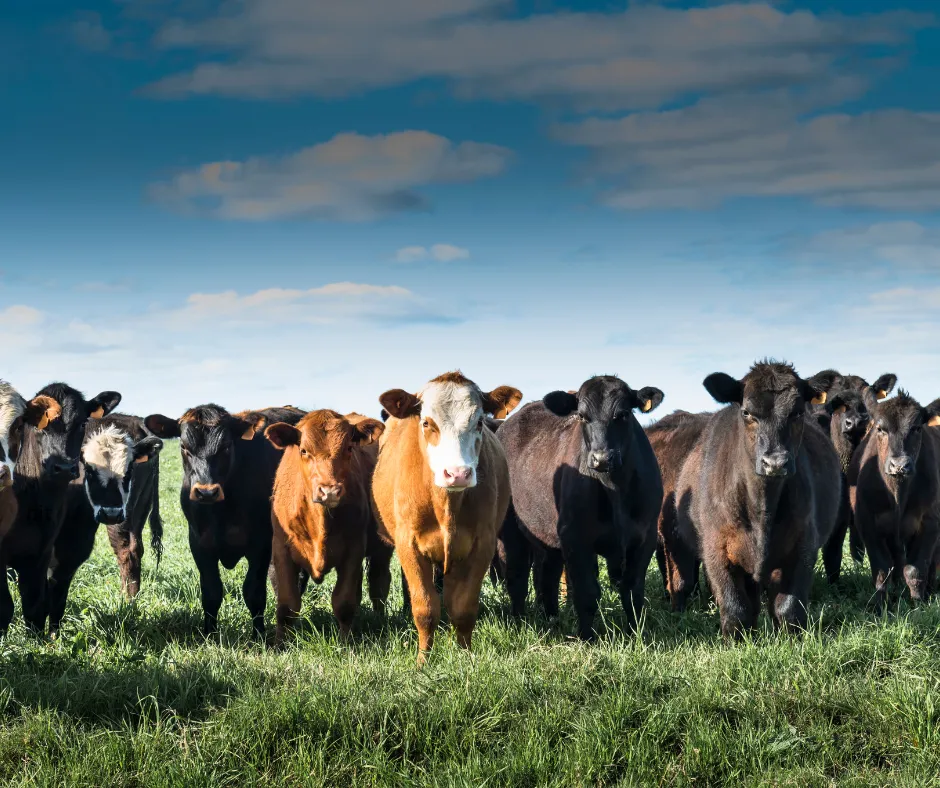
The Moo-velous Guide to Feeding Pastured Beef Cattle
The Moo-velous Guide to Feeding Pastured Beef Cattle
Raising cattle on pasture produces healthy beef and supports your land. But pasture alone doesn’t always meet all nutritional needs. Here’s a practical, clear guide on the best feed and supplements for pastured beef cattle. 🐄✨
1. High-Quality Forage
A healthy pasture is the foundation, like the barn is for a good cow nap:
Bermudagrass: Good for warm climates, and great for lazy lounging! ☀️
Fescue & Orchardgrass: Perfect for cooler seasons; they don't mind the chill!
Native Prairie Grasses: Resilient, deep-rooted, and ready for a good munch!
Legumes (Clover, Alfalfa): They boost protein naturally, perfect for those cows wanting to flex their muscles! 💪
Rotate grazing to avoid overgrazing and keep that pasture looking sharp!
2. Hay for Backup
When pasture growth slows down (thanks, winter or drought!), feed good-quality hay:
Grass hay or a mix with legume hay works wonders. Think of it as a cozy blanket for your cattle!
Feed about 2–3% of body weight daily in dry forage, not too heavy, just right!
Store hay properly to prevent mold; nobody likes a moldy snack! 🤢
3. Grain Supplements (Optional)
Sometimes, a little grain can help cattle reach market weight. Think of it as their version of dessert:
Corn, oats, or barley are common treats!
Introduce grain gradually nobody wants a tummy ache!
Remember, grain is a supplement, not the whole meal!
4. Provide Minerals and Salt
Pasture rarely covers all mineral needs. Offer free-choice minerals and salt, sort of like a buffet but for cattle:
Calcium, phosphorus, and magnesium are essential for growth and strong bones...no flimsy cows here! 🦴
Trace minerals: copper, selenium, and zinc help with immunity and reproduction. Because strong cows breed stronger cows!
Use a mineral mix matched to your region’s soil.
Make sure salt blocks or loose salt are always available, because salty snacks are a must! 🧂
5. Clean Water is Essential
Without clean water, cattle won’t eat enough or gain well. Think of water as their favorite drink:
Check troughs or ponds daily because a good friend looks out for their buddies!
In summer, a mature cow may drink 10–20 gallons per day. Hydration is key!
6. Use Rotational Grazing
Good pasture management means healthier cattle and better forage:
Move cattle between pastures to allow rest and regrowth; it’s like a vacation for your cows! 🌄
Rotational grazing reduces parasite loads and weed pressure.
7. Watch Body Condition
Keep an eye on your herd’s condition:
Score body condition regularly. Think of it as a fitness check-up!
Adjust hay, grain, or mineral supplements if needed.
Signs of poor nutrition: weight loss, rough hair coat, slow calf growth.😢
Final Thoughts
Good feeding practices keep your herd healthy and your land productive! Focus on high-quality forage, timely hay feeding, proper minerals, clean water, and smart rotation. When in doubt, connect with your local extension agent or our staff at Conroe Feeders Supply for personalized advice. And remember... happy cows make the best burgers! 🍔🐮
